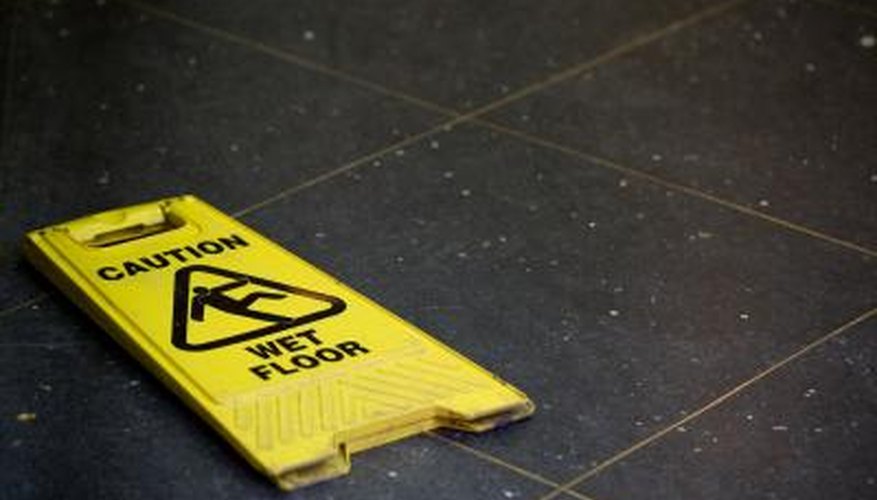Accident prevention is an integral part of safety management, whether it be in your home, school or business office. By taking safety measures to prevent accidents, you can keep those around you safe by reducing the risk of injuries -- even fatalities. Start by examining what types of accidents pose the most threat and then figure out ways to avoid or minimise them.
Identification
The first safety measure for preventing accidents is to identify the hazards that pervade. It is important to look at both the obvious safety threats as well as the ones that are inconspicuous. Fire, electric, slip-and-fall and mechanical hazards are some obvious ones, but the less obvious types may include rugs that are not properly adhered to a floor surface or uneven floor tiles. As you think about all the ways that potential accidents can occur, write them down in order of severity so you know which ones to address first.
- The first safety measure for preventing accidents is to identify the hazards that pervade.
- It is important to look at both the obvious safety threats as well as the ones that are inconspicuous.
Safety Inspections
Now that you know what types of hazards are most relevant to the environment you are attempting to keep safe, you can perform routine safety inspections to keep hazards under control. According to the Occupational Safety and Health Administration, inspections are an essential part of preventing accidents that pertain to mechanical power presses, other types of machinery, electrical equipment and other types of safety hazards. During a safety inspection, you visually assess an object or environment to survey for conspicuous hazards. Inspections may also include testing equipment to ensure it performs properly upon use. You can perform safety inspections on anything, from a school desk to your home computer cords.
- Now that you know what types of hazards are most relevant to the environment you are attempting to keep safe, you can perform routine safety inspections to keep hazards under control.
- During a safety inspection, you visually assess an object or environment to survey for conspicuous hazards.
Warning Signs
Warning and caution signs can prevent accidents by informing others about impending safety dangers. When a floor surface is wet or slippery, set out a sign to warn people to go around the dangerous area. Setting out a warning sign for an area that has a risk of falling objects -- such as a construction zone -- will also prevent accidents. Even a label on a bottle of toxic chemicals can let people know the contents of the bottle are dangerous. Without warning signs, children and adults will have no knowledge that a safety hazard exists and thus risk experiencing accidents.
- Warning and caution signs can prevent accidents by informing others about impending safety dangers.
- Without warning signs, children and adults will have no knowledge that a safety hazard exists and thus risk experiencing accidents.
Storage
You can take steps to prevent accidents by locking away things like chemical solutions and dangerous weapons so they are inaccessible to children or adults. This is a proactive way to keep those in the immediate environment safe even when hazardous objects must be present.
Training and Education
By training and educating others on the types of accidents that exist in their environment, you can minimise safety hazards and create a safer atmosphere. Give people training on how to avoid injuries, how to use mechanical equipment, how to identify electric hazards, how to safeguard machines and how to understand warning signs. You may also wish to perform routine safety drills so individuals know how to safely evacuate an area and be safe from accidents during an emergency.
